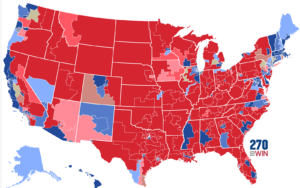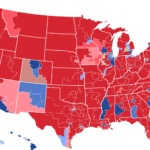The war in Yemen has worsened the past week. In fact, over the last year, the war in Yemen has taken a dramatic turn for the worse. Even though the U.S.-led coalition keeps a close eye on the unfolding situation, more military tension rises. More U.S. Navy physical presence and military watchtowers advance their involvement without being directly engaged in the civil war in Yemen. The airstrikes led by Saudi Arabia have intensified and worsened day by day. As a result, more children and innocent civilians are being killed. The humanitarian crisis has also turned into a living nightmare for most civilians in Yemen who try to escape the incessant bombings.
The Houthis, officially called Ansar Allah, are a Zaidi Shia-led socio-political movement that emerged from Sa’dah, in northern Yemen, in the 1990s and has fought against the central government on and off since 2004. In this war, Yemen is the primary target of competing forces who want to dominate and take large parts of territories. The main point is that the Houthis, which originated as a peaceful and theological movement, grew strong over the years. Since 2004, the country has been engulfed in six separate conflicts left by the political vacuum in the war in Iraq and Afghanistan has also spilled over to others regional and neighboring countries.
The BBC reports:
“The main fight is between forces loyal to the beleaguered President, Abdrabbuh Mansour Hadi, and those allied to Zaidi Shia rebels known as Houthis, who forced Mr Hadi to flee the capital Sanaa in February. Yemen’s security forces have split loyalties, with some units backing Mr Hadi, and others the Houthis and Mr Hadi’s predecessor Ali Abdullah Saleh, who has remained politically influential. Mr Hadi is also supported in the predominantly Sunni south of the country by militia known as Popular Resistance Committees and local tribesmen. (26 March 2015)
The main goal of the Houthi forces embroiled in this regional power struggle is with the Arabian Government. Moreover, a more important religious problem emerges in the Yemen’s war–a religious divide between the Sunnis (backed by Sunni Saudi Arabia) and the Shia (backed by Iran). This geopolitical struggle for identity, territory, and the religious fault line have created severe and deepening tensions between Saudi Arabia and Iran as well. Saudi Arabia accuses Iran of financing and providing weapons and military equipment to the Houthi forces. The biggest problem comes from the shipping route that goes through the Red Sea and the Gulf of Aden, which is a major sea passage for most of the world’s oil shipment. Saudi Arabia is afraid that if the Houthis take over that passage, most of the world’s oil shipments will be compromised and resources will dwindle.
From the same source, “In recent years Yemen has seen violent conflicts largely caused by underlying problems of unequal access to power and resources. There have been six rounds of fighting between the state and the Houthis in the north; separatist unrest in the south; frequent attacks by AQAP; and power struggles between tribal and military factions.”
In most recent days, the U.S. has been the target of missiles attacking navy ships harboring near Yemen’s waters. From NPR, “U.S. Navy ships off Yemen’s southwestern coast came under missile attacks twice in four days this week, including an incident Wednesday. The U.S. responded by firing their first public shots into Yemen on Thursday, but the Obama administration was keen to stress that they were acting for their own safety.” (13 october 2016). There is a belief that someone or some people are trying to get the United States involved in the civil war in Yemen, either inadvertently or intentionally. Iran is not a particular ally of the United States.
From the same news agency: “The problem is that the Saudi bombing campaign has killed many Yemeni civilians with U.S.-built weapons dropped from U.S.-made aircraft, refueled by U.S. Air Force tankers and supported by U.S. intelligence.” Once again, the United States has not been officially engaged in the civil war in Yemen. However, the Houthi forces believe that the United States is also responsible for the Middle Eastern tensions throughout the entire peninsula. Since the invasion of Iraq and Afghanistan in 2003 by deploying American boots on the ground, many Middle Eastern countries have been impacted on all levels. The civil war in Yemen, the war in Syria, and the myriad of militants, militia, and others groups involved in these wars are astounding. The world seeks out order and peace, but it seems to be going the other way.
There is more troubling information from the same news agency: “More recently, American and other allied warships have stopped several shipments of weapons from Iran to the Houthis.” The question is, who is benefiting, who is lying to whom, who is taking advantage of the war in Yemen, and who is really behind the escalation of war as Al-Qaeda is also present there? Amidst the devastations, the loss of lives, and the political corruption, the war in Yemen continues claiming more civilian victims pictured as a dark image similar to the six-year’s war in Syria that keeps dragging on.
Main Photo:












